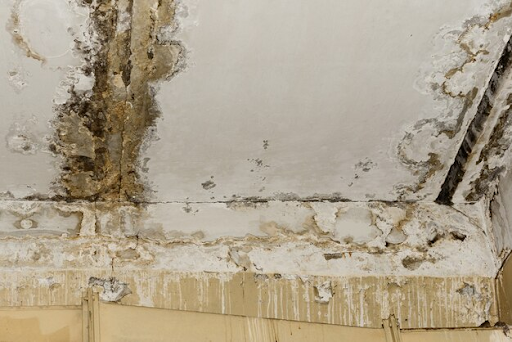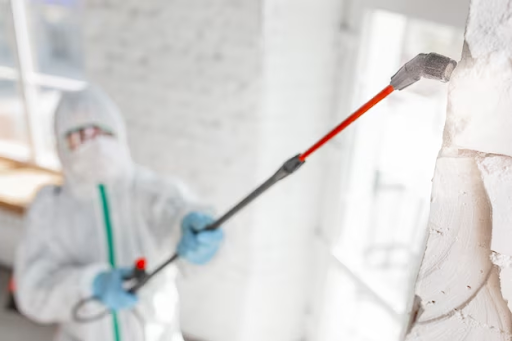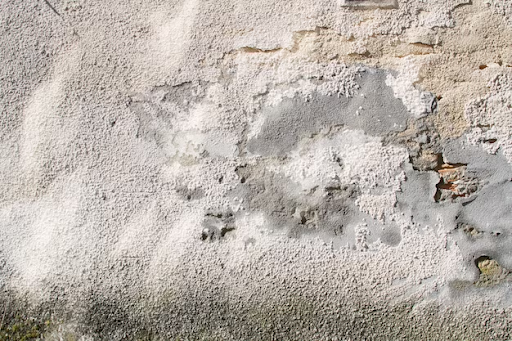Asbestos, a term that rings alarm bells, has a storied history in New Zealand homes. This article delves deep into when asbestos was used in homes in NZ, the types of materials that contained asbestos, and the legacy and removal of this hazardous substance. Whether you’re a homeowner, a renovator, or simply curious, this article aims to enlighten you on the critical aspects of asbestos in New Zealand’s residential buildings.
Early Uses and Popularity

Asbestos, a naturally occurring mineral known for its remarkable properties like durability, fire resistance, and insulating capabilities, gained widespread popularity as a building material globally. In New Zealand, its utilization in residential construction began in the early 20th century, reaching its zenith between the 1940s and late 1980s. During this period, asbestos found its way into numerous building materials, making it a ubiquitous presence in homes.
Table: Common Asbestos-Containing Materials in Homes
| Materials | Description |
| Roofing and Siding | Asbestos cement sheets were extensively used for roofing and siding due to their resilience and fire-resistant properties. |
| Insulation | Asbestos was a prevalent component in insulation products designed for walls, pipes, and attics, serving as an effective heat and sound insulator. |
| Vinyl Tiles and Linoleum | Flooring materials often incorporated asbestos to enhance their longevity and fire resistance, making them durable choices for homes. |
| Textured Ceilings and Walls | Some textured paints and coatings included asbestos, adding a distinctive finish to ceilings and walls, but posing health risks if disturbed. |
The durability and fire resistance of asbestos made it an attractive choice for builders and homeowners. However, the discovery of the severe health hazards associated with asbestos exposure initiated a significant shift in its usage patterns.
Decline and Regulation
The revelation of the health risks linked to asbestos exposure, including diseases such as asbestosis, lung cancer, and mesothelioma, prompted a decline in its popularity as a building material in New Zealand. The adverse health effects of asbestos exposure are primarily attributed to the inhalation of asbestos fibers, which can become airborne when asbestos-containing materials are damaged or disturbed.
To address these concerns, New Zealand initiated regulatory measures and bans, beginning in the 1980s, to mitigate the usage of asbestos in residential construction. These actions were aimed at safeguarding the health of both construction workers and occupants of homes containing asbestos-containing materials.
Key developments in the regulation of asbestos in New Zealand include:
- Health and Safety Regulations: New Zealand introduced stringent health and safety regulations in workplaces and construction sites, necessitating asbestos management plans and safe removal procedures.
- Bans on Asbestos Products: The government imposed bans on certain asbestos products and materials, reducing their availability in the market.
- Asbestos Removal Guidelines: Detailed guidelines were established for the safe removal and disposal of asbestos-containing materials to minimize exposure risks during renovations or demolitions.
- Public Awareness: Public awareness campaigns were launched to educate homeowners and construction professionals about the dangers of asbestos and the importance of proper handling.
- Asbestos Register: An asbestos register was created to document the presence of asbestos-containing materials in properties, aiding in the safe management and removal of asbestos when necessary.
- Workplace Safety: Occupational safety regulations were strengthened to protect workers involved in asbestos-related activities, ensuring they receive proper training and equipment.
Living with a Legacy: Asbestos in Existing Homes
Although its use in new construction has been banned in many countries, including New Zealand, asbestos can still be found in numerous existing homes. Let’s delve into the prevalence of asbestos in existing homes, the risks it poses to homeowners, and the steps to manage and mitigate these risks effectively.
Prevalence of Asbestos in Existing Homes
Asbestos-containing materials (ACMs) were commonly used in various construction applications until the late 20th century. Homes built or renovated before the 1990s are at a higher risk of containing asbestos due to its widespread use during that period. The following table illustrates the common areas where asbestos may be found in existing homes:
| Area | Common Asbestos Materials |
| Roofing | Asbestos-cement roof sheets, shingles, and tiles |
| Siding | Asbestos-cement cladding |
| Flooring | Vinyl tiles with asbestos backing |
| Insulation | Loose-fill asbestos insulation |
| Ceilings and Walls | Asbestos-containing plaster and textured coatings |
| Pipes and Ducts | Asbestos insulation wraps |
| Electrical Components | Asbestos-containing electrical panels |
Health Risks Associated with Asbestos Exposure
Exposure to asbestos fibers can lead to severe health issues, primarily asbestos-related diseases, which include:
- Asbestosis: Asbestosis is a chronic lung disease caused by the inhalation of asbestos fibers. Key symptoms include shortness of breath, coughing, and a decreased ability to engage in physical activity.
- Mesothelioma: Mesothelioma is a rare but aggressive cancer that affects the lining of the lungs, abdomen, or heart. It is primarily caused by asbestos exposure, and its prognosis is often poor.
- Lung Cancer: Exposure to asbestos significantly increases the risk of developing lung cancer, especially among individuals who smoke.
- Pleural Thickening: Pleural thickening is the scarring of the pleura, the membrane lining the lungs and chest cavity. It can lead to chest pain and breathing difficulties.
Managing Asbestos in Existing Homes
Given the serious health risks associated with asbestos exposure, homeowners should take proactive steps to manage and mitigate asbestos in their existing homes:
- Identification: The first step is identifying the presence of asbestos-containing materials through professional inspection and testing. Asbestos materials are often not visibly distinguishable, and only specialized testing can confirm their presence.
- Risk Assessment: Once identified, the risk associated with the asbestos-containing materials must be assessed. Factors such as material condition, location, and accessibility determine the level of risk.
- Asbestos Removal or Encapsulation: In cases of high-risk materials or if homeowners plan significant renovations, asbestos removal by licensed professionals is the safest option. For materials that are in good condition and not easily disturbed, encapsulation can be a viable alternative.
- Safe Work Practices: When working with or near asbestos-containing materials, strict safety precautions must be followed, including the use of personal protective equipment (PPE), containment of the work area, and proper disposal of asbestos waste.
- Regular Inspections and Maintenance: Regular inspections and maintenance can help ensure that asbestos-containing materials remain in good condition. Any signs of deterioration should be addressed promptly to prevent fiber release.
- Educating Occupants: Educating occupants about the potential risks and proper safety measures is crucial. This includes informing family members and contractors working on the property.
Identifying Asbestos in Your Home
Recognizing potential asbestos-containing materials (ACMs) in your home is crucial. However, it’s important to note that visual identification alone is often insufficient. Asbestos fibers are microscopic and not visible to the naked eye. Therefore, professional asbestos testing is recommended for accurate confirmation. Nevertheless, here are common areas and materials where asbestos may be found:
| Area | Common Asbestos Materials |
| Roofing | Asbestos-cement roof sheets, shingles, and tiles |
| Siding | Asbestos-cement cladding |
| Flooring | Vinyl tiles with asbestos backing |
| Insulation | Loose-fill asbestos insulation |
| Ceilings and Walls | Asbestos-containing plaster and textured coatings |
| Pipes and Ducts | Asbestos insulation wraps |
| Electrical Components | Asbestos-containing electrical panels |
The most reliable method to confirm the presence of asbestos in your home is professional asbestos testing. Here’s how the process typically works:
- Engage a Licensed Asbestos Assessor: Contact a licensed asbestos assessor or removalist who is accredited by the New Zealand Ministry of Business, Innovation, and Employment (MBIE). Ensure they have the necessary qualifications and experience to conduct asbestos testing.
- Visual Inspection: The assessor will conduct a visual inspection of your property to identify potential ACMs. This involves a thorough examination of areas where asbestos is commonly found.
- Sampling: If suspect materials are identified during the visual inspection, the assessor will carefully collect samples for laboratory analysis. These samples will be analyzed to determine if they contain asbestos.
- Laboratory Analysis: Samples are sent to accredited laboratories for analysis. Microscopic examination and specialized testing methods are used to confirm the presence of asbestos fibers.
- Report and Recommendations: Upon receiving the laboratory results, the assessor will provide you with a detailed report, including recommendations for management or removal of asbestos-containing materials, if necessary.
Safe Removal and Disposal

In New Zealand, the removal and disposal of asbestos-containing materials are subject to strict regulations to ensure the safety of both workers and the general public. This comprehensive guide will provide you with detailed information on the safe removal and disposal of asbestos in New Zealand, highlighting the importance of hiring licensed professionals and adhering to the established guidelines.
Regulatory Framework
New Zealand has a robust regulatory framework in place to govern the management of asbestos-containing materials. The key legislation and regulations include:
- Health and Safety at Work (Asbestos) Regulations 2016: These regulations outline the legal requirements for managing asbestos in the workplace and include provisions for safe removal and disposal.
- Environmental Protection Authority (EPA): The EPA oversees the management and disposal of hazardous substances, including asbestos.
- WorkSafe New Zealand: WorkSafe is the government agency responsible for workplace health and safety. They provide guidance and resources for asbestos management.
Importance of Hiring Licensed Professionals
Safe asbestos removal and disposal require specialized knowledge, equipment, and training. It is crucial to hire licensed professionals who have the expertise to handle asbestos-containing materials safely. Licensed asbestos removalists in New Zealand are trained and equipped to:
- Conduct Asbestos Surveys: Professionals can identify asbestos-containing materials (ACMs) in your property through thorough inspections and testing.
- Develop Safe Removal Plans: They create detailed plans that outline the procedures for removing ACMs safely.
- Use Protective Gear: Licensed professionals wear appropriate personal protective equipment (PPE) to minimize their exposure to asbestos fibers.
- Contain and Isolate: ACMs are carefully sealed and isolated to prevent the release of asbestos fibers into the environment.
- Employ Safe Removal Techniques: Licensed experts use specialized methods to minimize asbestos fiber release during removal.
- Properly Dispose: They ensure that asbestos waste is disposed of at authorized disposal facilities in accordance with regulations.
Steps for Safe Asbestos Removal and Disposal
The following steps should be followed when removing and disposing of asbestos in New Zealand:
| Step | Description |
| Asbestos Survey | Hire a licensed asbestos surveyor to inspect your property and identify ACMs. |
| Develop a Removal Plan | Engage a licensed asbestos removalist to create a detailed removal plan, including risk assessments and work methods. |
| Notify Authorities | In some cases, you may need to notify WorkSafe New Zealand or local authorities before commencing removal work. |
| Obtain Necessary Permits | Depending on your location and the amount of asbestos to be removed, permits may be required. |
| Isolation and Containment | Licensed professionals will isolate the work area and set up containment measures to prevent asbestos fibers from escaping. |
| Safe Removal | Removalists will use specialized equipment and techniques to safely remove ACMs. |
| Decontamination | Workers and equipment must be decontaminated before leaving the work area. |
| Waste Disposal | Asbestos waste is double-bagged, labeled, and transported to an authorized disposal facility. |
| Clearance Inspection | A final inspection and air monitoring tests are conducted to ensure the area is free from asbestos fibers. |
| Documentation | Maintain records of all removal and disposal activities for compliance and future reference. |
Disposal of Asbestos Waste
Proper disposal of asbestos waste is critical to prevent environmental contamination and health risks. It is essential to:
- Use authorized asbestos disposal facilities.
- Label waste containers with appropriate warnings.
- Follow the EPA guidelines for transporting asbestos waste.
Conclusion
The story of when asbestos was used in homes in NZ serves as a cautionary tale about the hidden dangers in building materials. Awareness, education, and proper management are key to dealing with the asbestos legacy safely and ensuring healthier homes for future generations. As homeowners, regulators, and industry professionals continue to tackle this issue, the goal of an asbestos-free living environment becomes ever more attainable.
FAQs
Q: How can I tell if my home has asbestos?
A: If your home was built or renovated when asbestos was used in homes in NZ, particularly between the 1940s and 1980s, it might contain asbestos. Professional testing is the best way to confirm.
Q: Is it safe to live in a house with asbestos?
A: Living in a house with intact and undisturbed asbestos materials may not pose immediate risks. However, if the asbestos is damaged or disturbed during renovations, it can release harmful fibers. It’s best to have suspected materials checked and removed if necessary.
Q: What should I do if I find asbestos in my home?
A: Do not attempt to remove or disturb it. Contact a licensed asbestos removalist who can assess the situation and safely remove and dispose of the material.
Q: When was asbestos banned in New Zealand homes?
A: The use of asbestos in new building materials has significantly decreased since the 1980s, with a complete ban on importing and using most asbestos-containing products in effect from 2016.


